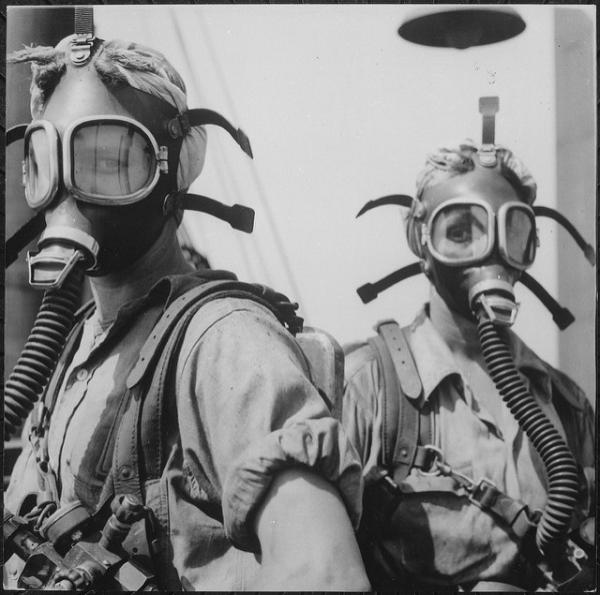An article published in Science on volatile chemicals has predictably entered the mainstream media featuring concerns about how we are polluting our planet more and more with household products. As is frequently the case, the media shares that portion that contributes to the narrative of society despoiling nature and leaves out the rest of the story.
Background
Fossil fuels are responsible for the human-made chemicals in our atmosphere, some coming from our fuels and others from fuels turned into other products, like paint, nail polish, industrial adhesives, or hair products. These non-fuel sources, referred to collectively as volatile chemical products contain volatile organic chemicals, VOCs, often as solvents. These compounds evaporate over time into the atmosphere. They can react with nitrogen oxides already in the atmosphere to create ozone, or they may contribute to what we might describe as mists, but is actually very fine particulate matter, categorized as PM2.5.
Most of the media lead with the fact that volatile chemical products, including cleaners and personal care items, are contributing more relative to volatile chemicals from fuel to our atmosphere than previously. That sounds ominous: a new chemical concern. But buried in the full article is
“Indoor emissions of aromatic compounds have decreased by ~7% per year between 1981 and 2001, comparable to decreases in transportation emissions of ~8% per year.”
Let me reframe those numbers. In the 20-year period from 1981 to 2001, transportation emissions were reduced by 80%; indoor emissions, of the volatile chemicals that are of such concern, were reduced by 75%. So only in a bizarro world, like Washington DC -- where no change in a budget item is referred to as a budget cut -- can a decrease be called an increase.
So, the absolute risk of VOCs is declining. Why? Because of “the increasing effectiveness of modern three-way catalytic converters in reducing tailpipe VOC emissions over multiple decades.” You would think we should be celebrating rather than becoming more anxious.
Another confusion between absolute and relative lay in the percentages quoted by the authors and echoed in the press. Personal care products1 contribute 4.1% and cleaners2 20.8% to volatile chemical products, but volatile chemical products are only 6% of all fossil fuel usage. Again, let's reframe those numbers. Personal care products contribute 0.24% to our usage of fossil fuels, while cleaning products are 1.25% of the total. Can anyone seriously claim that these percentages represent a new, increasing threat?3
Context is important
Consider this quote from the NY Times,
"Concerned consumers may be tempted to turn to “natural” products, though the researchers say that isn’t a cure-all. For example, one class of compounds called terpenes gives many cleaning products a pine or citrus smell. These terpenes can be produced synthetically, or naturally from oranges.
'But whether it’s synthetic or natural, once it gets into the atmosphere it’s incredibly reactive,' Dr. Gilman said. Similar natural compounds give the Blue Ridge Mountains in Appalachia their name, from the blue haze formed by terpenes emitted from the trees there, Dr. Gilman added."
Let us provide a little context, according to at least one source. Trees produce six times more terpenes than man. Air fresheners and surface cleaners contribute about 0.2% of all terpenes found in the atmosphere; trees provide the rest. If terpenes are your concern stopping the use of air fresheners and surface cleaners will have little impact; burning down all the trees would be more productive. But wait, fires contribute to the real villain that the authors wish to address PM2.5.
PM2.5
There is a growing concern in parts of the scientific community regarding the particulate matter that is 2.5 micrometers. While the study emphasizes the aerosols released by these volatile chemical compounds they are not a major source of these particles. The primary source of PM2.5 globally is unpaved roads and fires.
The science surrounding PM2.5 is unclear in so many ways. First and foremost, it is uncertain whether PM2.5’s represent a health hazard in the United States as it does in China. (My colleague Dr. Berezow has written about this previously) Second, the amount of PM2.5 is related to atmospheric conditions, the presence of chemicals they react with, the time of day, and geography. So speaking about PM2.5 as a static entity is silly. The authors make their real concern apparent in the final paragraphs of the study.
“VCPs have begun to contribute significantly to SOA [secondary organic aerosol] formation outdoors. … global mortality from fine particles is significantly greater than for ambient O3 [ozone] pollution…”
The seeds for the new scare are being planted.
We have made significant inroads in reducing emissions from gasoline, we have, in fact, made similar major inroads in reducing emissions from volatile chemical products. For the narrative that man is destroying our world, a new culprit must be found. Volatile chemicals and their secondary effects are replacing our fear of fossil fuels. Is the era of Big Cosmetics and Big Cleaners far off?
Notes
[1] Haircare, lotions, other cosmetics, perfumes, shaving and mouthwash products - in declining order of their contribution.
[2] Laundry, dishwashing, surface cleaners, industrial degreasers, polishes, air fresheners – in declining order of their contribution.
[3] Numeracy is an understanding of numbers, as literacy is an understanding of the written word. Numeracy is absent for many individuals when it comes to understanding percentages and ratios. I would cautiously suggest that some of our mainstream writers are number challenged.
Source: Volatile chemical products emerging as largest petrochemical source of urban organic emissions. Science DOI: 10.1126/science.aaq0524




